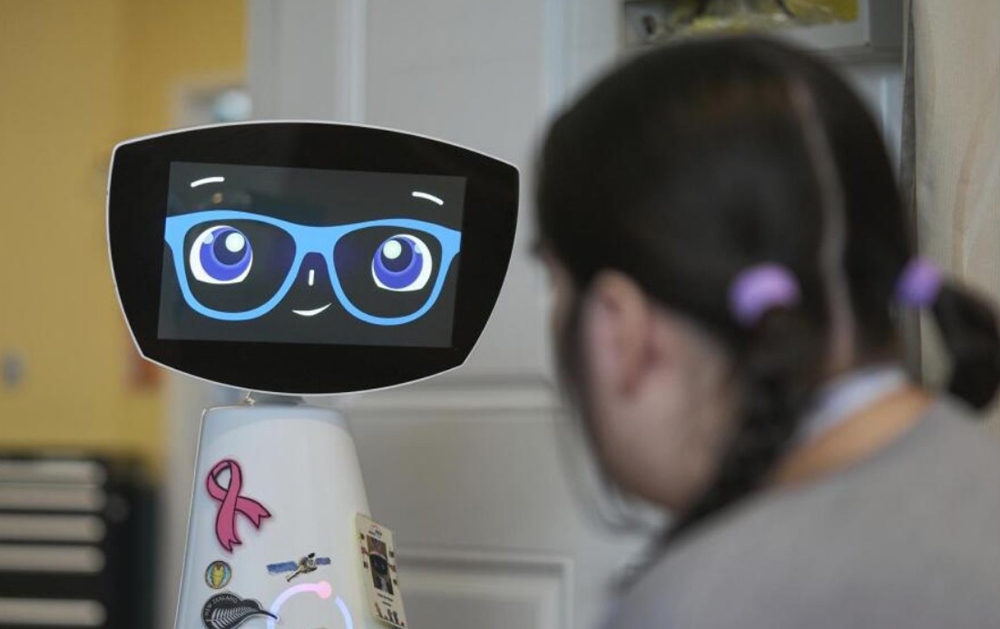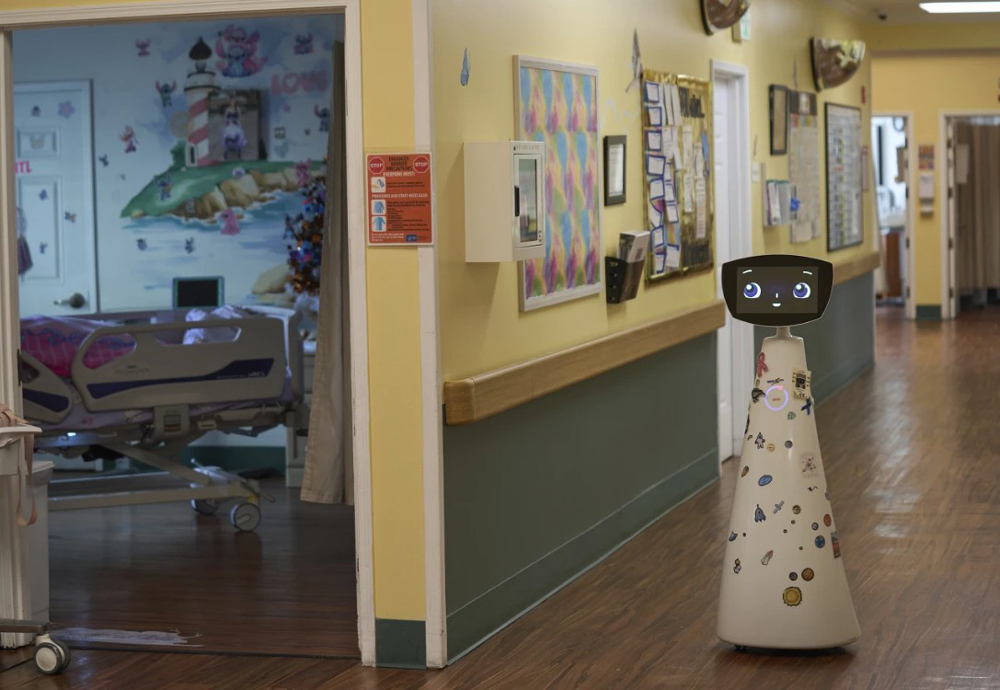Upon seeing 6-year-old Luca, a leukemia patient at UMass Memorial Children's Medical Center (Massachusetts), the Robin robot chirped, "Luca, how are you? Long time no see." Luca's mother, Meagan Brazil-Sheehan, said her son's face lit up when the robot remembered his name after just one previous meeting.
Robin is an artificial intelligence (AI) product from Expper Technologies. Five years after its launch, the robot has become a familiar face in hospitals across California, Massachusetts, New York, and Indiana. Karen Khachikyan, CEO of Expper Technologies, said the robot was created to ease the burden on overworked healthcare staff, giving them more time for in-depth patient interaction.
"She brings joy to everyone. As she moves down the hallway, everyone enjoys chatting and greeting her," said Samantha da Silva, a speech therapist at HealthBridge Children's Hospital (California).
 |
The Robin robot is programmed to provide emotional support in nursing homes and pediatric wards, while also addressing staff shortages. Photo: AP |
The Robin robot is programmed to provide emotional support in nursing homes and pediatric wards, while also addressing staff shortages. Photo: AP
In hospitals, Robin performs a variety of interactive tasks. It can play a teenager's favorite song after an accident, make jokes with funny glasses to make a baby laugh, or play tic-tac-toe with another patient. The ability to remember names, preferences, and mirror the emotions of others makes Robin a special companion. If a patient smiles, the robot smiles back. If they are sad, its on-screen face shows empathy.
Currently, Robin can act autonomously about 30% of the time; the rest is controlled remotely by a team of specialists. However, Khachikyan said each interaction helps the robot collect data to move closer to complete independence, with the goal of creating "pure emotional intelligence like in the movie WALL-E".
The use of robots comes as the Association of American Medical Colleges predicts a shortage of up to 86,000 doctors in the US over the next 11 years. The development team's vision goes beyond emotional support; they are working to enable Robin to measure vital signs and send the information to doctors. Longer-term plans include designing robots that can help elderly patients with dressing and toileting.
"Our goal is to design the next version of Robin that can take on more responsibilities and become an essential part of the healthcare system," Khachikyan said, emphasizing that the purpose is not to replace humans but to "fill the gaps" in staffing.
The idea for Robin stemmed from the founder's personal experience. Growing up lonely in Armenia, Khachikyan always wanted to build a robot that could befriend people. After experimenting in various fields, the first pilot program for Robin was launched at UCLA Mattel Children's Hospital in 2020 and quickly achieved success.
Robin's personality is constantly being refined based on direct feedback. For example, when asked about its favorite animal, the robot initially answered "dog" or "cat." But when tested with the answer "chicken," the children's delighted reaction led the team to keep this option. "We often say that Robin is designed by its own users," Khachikyan said.
 |
The robot is designed with the appearance of a little girl, remembering not only the names but also the favorite songs of the children. Photo: AP |
The robot is designed with the appearance of a little girl, remembering not only the names but also the favorite songs of the children. Photo: AP
Binh Minh (AP)












